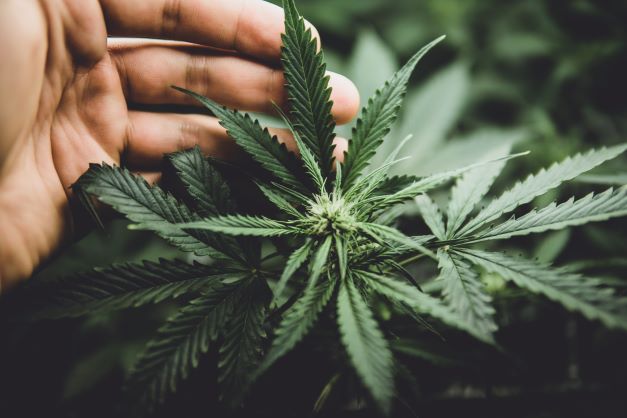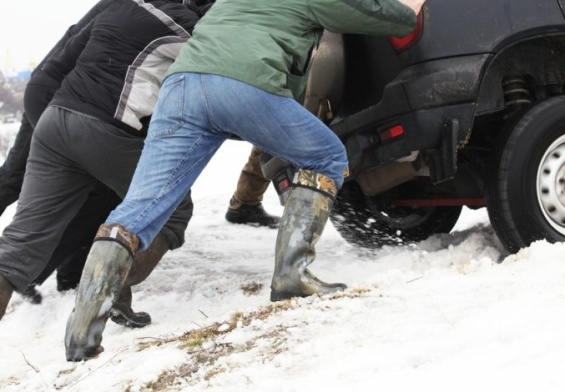Originally posted on: https://commonlegalquestions.com/america-and-the-legalization-of-marijuana/
This week during midterm elections, Maryland and Missouri became the 20th and 21st states to legalize marijuana for adult recreational use. Surprisingly, 4 out of the 5 states with cannabis on the ballot during the 2022 midterm elections were conservative. Since Colorado and Washington first legalized weed in 2012, 19 states and the District of Columbia have legalized marijuana for adult recreational use. Now that Maryland and Missouri have legalized weed, over 50% of Americans have access to legal marijuana. According to a 2021 survey conducted by the Paw Research Center, 91% of Americans favor some form of marijuana legalization. With marijuana quickly becoming a legal substance throughout America, it is important to understand why it became illegal in the first place.
History of Marijuana Regulation in America
Marijuana has been a controversial political topic for centuries, dating all the way back to the Colonial Era. In 17th Century America, production of hemp (the cannabis plant) was actually encouraged by the government in order to make rope, sails, and clothing. By the late 19th Century, marijuana started to be used for medicinal purposes, even being openly sold in pharmacies. With the Mexican Revolution of 1910 came the use of marijuana for recreational purposes. This caused the plant to become associated with immigrants, inevitably creating a negative connotation when it comes to marijuana. During the Great Depression, high rates of unemployment and increased widespread fear of Mexican immigrants engendered both public and governmental concern about the potential issues related to marijuana. In fact, by 1931, 29 states had already outlawed marijuana.
By 1937, the United States Congress passed the Marijuana Tax Act, which criminalized marijuana. While the government was cracking down, the New York Academy of Medicine released a report stating that marijuana did not cause violence, insanity, or lead to addiction. During World War II, the United States Department of Agriculture launched a “Hemp for Victory” program, as hemp was used to produce marine cordage, parachutes, and other military gear.
In the 1950s, the government enacted federal laws that set mandatory sentences for drug-related offenses. Even with these federal laws, the 1960s was still a decade in which the cultural climate shifted more towards leniency when it came to marijuana. By 1970, Congress ended up repealing most of the mandatory sentences for drug-related offenses and in 1972, the bipartisan Shafer Commission (appointed by President Nixon) recommended that the personal use of marijuana should be decriminalized (although this was rejected by President Nixon). Even with the rejection, 11 states decriminalized marijuana and many other reduced the penalties associated with it.
Unfortunately, in 1976, a parent’s movement against marijuana started and became an instrumental part of the 1980s “War on Drugs.” Under President Reagan, mandatory sentences for drug-related crimes were re-enacted and the War on Drugs continued under President Bush’s reign as well. Even with the War on Drugs, public perception of marijuana was still all over the place. In 1996, California passed Proposition 215, allowing for the sale of medical marijuana for patients with AIDS, cancer, and other serious and painful illnesses. To this day, there is still a lot of tension between the federal laws that criminalize marijuana and the state laws that permit it in particular circumstances.
Benefits of Marijuana and Legalization
Even though America is making many strides when it comes to the legalization of cannabis, marijuana is still classified as a Schedule I drug according to the federal government. A drug that is classified under this distinction is defined as having “no currently accepted medical use and a high potential for abuse.” Under this definition, cannabis would be considered equivalent to drugs like LSD, heroin, and ecstasy. Even though the first statewide medical marijuana legislation when into effect in 1996 in California and is now fully legal in 21 states, cannabis is still demonized by many, although these thoughts have been shifting recently.
While it can be difficult to see the individual and public health benefits that could come from legalizing cannabis, it is valuable to at least try and understand the positives of this plant. For many, cannabis can help reduce symptoms of chronic conditions and illnesses. If marijuana is fully legalized, these individuals can continue to use their medicine without having to fear criminal repercussions. In both America and Canada, we have seen a rapid and devastating increase in addiction and death from opiates- two large studies have actually shown around a 25% decrease in opioid-related deaths due to the legalization of medical cannabis and availability of dispensaries. Studies have also found cannabis to be a safe and effective drug for those dealing with chronic pain and could be used as a substitute for other more harmful drugs.
Those who are in support of marijuana legalization recognize its potential to boost the United States economy. By 2025, the marijuana industry in America could exceed $24 billion in revenue. This means that for every $1 spent in the industry, between $2.13 and $2.40 in economic activity is engendered. Some other industries that could benefit from the legalization of marijuana include banking, food, real estate, construction, and transportation, among others. In 2016, the legal marijuana industry generated over $7.2 billion in economic activity and added millions to federal taxes paid by marijuana businesses. In Colorado, a state that has helped pave the way for legalization, marijuana brings in 3x more tax revenue than alcohol.
At the Washington School of Medicine, researchers found that although more states are legalizing and/or decriminalizing marijuana, the rates of marijuana use by teenagers are falling. The National Survey on Drug Use and Health discovered that just two years after Colorado legalized marijuana for adult use, the amount of teens aged 12 to 17 that use cannabis dropped by 12%. This same pattern can be observed in Washington state following weed legalization in 2012 with the percentage of 8th graders using marijuana dropping from 9.8% to 7.3%. Many other studies have shown that this pattern continues to repeat itself, confirming that marijuana policy reforms don’t cause rates of marijuana use in youths to increase- if anything, it has been shown to decrease youth use.
Weed legalization was even found to possibly decrease traffic deaths and DUIs, as could be seen in Washington and Colorado. Benjamin Hansen, an economics professor at the University Oregon, studied traffic deaths post-medical marijuana legalization and found that traffic deaths dropped an average of 11% in legal states. Studies have also shown that people who drive under the influence of cannabis are more cautious and take less risks than those driving under the influence of alcohol. In fact, the National Highway Traffic and Safety Administration believes that some drivers may actually drive better under the influence of marijuana due to overcompensation for self-perceived impairment.
Legalization of Marijuana in New Jersey: A Case Study
A great example of a state that has benefitted from the legalization of marijuana is New Jersey. Some of the benefits that have come along with the legalization of marijuana include reduced crime rates, increased tax revenue, and decreased marijuana arrests. In the second quarter of 2022, New Jersey brought in almost $80 million in recreational marijuana sales and over $4.6 million in tax revenue. One benefit that wasn’t necessarily expected was the boost in home real estate values. According to a study conducted by Rutgers New Jersey State Policy Lab, towns in New Jersey that have embraced the legalization of weed have seen average home sales prices increase by 1.6% than towns that do not have legal weed sales. This equates to $6,366 in higher real estate prices.
One could argue that home prices in New Jersey have already been rising for years now, regardless of marijuana legalization, but a study conducted in Colorado, a state that has had marijuana legalized since 2012, showed that by 2015 home prices in areas that allowed retail marijuana increased by 8%, which comes out to a whopping $21,200.
Conclusion
Overall, the legalization of marijuana has many more positive outcomes than negative. With more conservative states beginning to legalize cannabis, it is likely that one day in the near future the government will have legalized marijuana across all 50 states. As of October 2022, 37 states have already legalized medical marijuana, which is definitely a step in the right direction. President Joe Biden has also announced that he would grant pardons for those with simple marijuana possession convictions and urged state governors to do the same for state offenses. President Biden has also requested that the United States Secretary of Health and Human services and the attorney general reschedule how marijuana is viewed under federal law.




